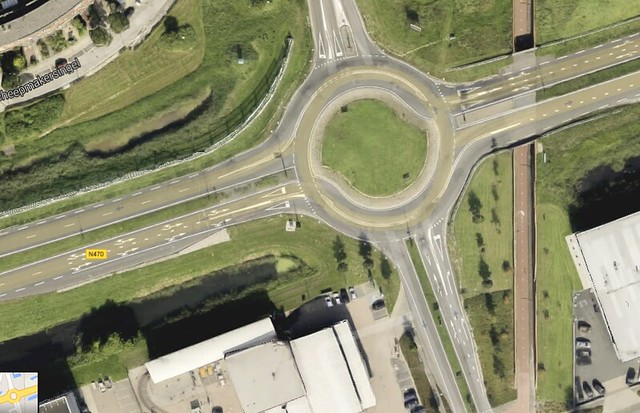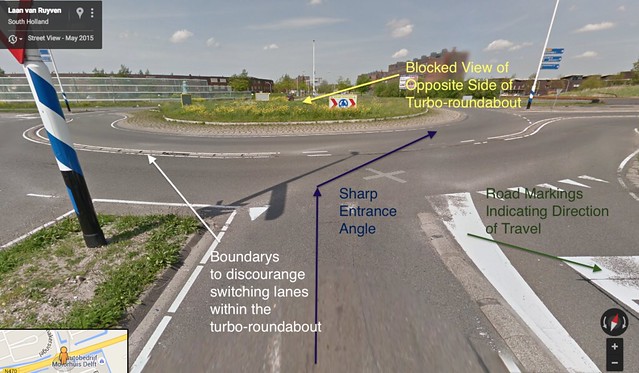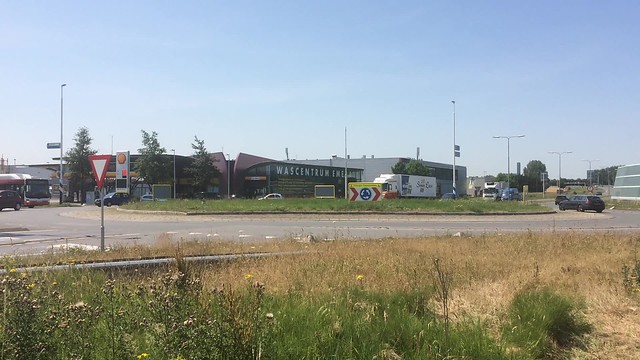Turbo-Roundabout
Sustainable Safety
This turbo-roundabout in Pijnacker demonstrates the Dutch design ideology of sustainable safety. There are 3 main points of sustainable safety:
- Functionality: roads are classified into 3 categories: flow, distributor, and local
- Recognizability: consistent design that allows users to recognize the intended function of the road/feature
- Homogeneity: traffic mixing will only work with low speeds, otherwise facilities should be physically separated
Turbo-roundabouts are normally used on roads that carry large volumes of car traffic, otherwise known as flow roads. These roads need high capacity for through traffic but also need to accommodate cars that are changing roads. These roads carry too much traffic to have a single lane roundabout and an intersection is time inefficient. An intersection also requires all the cars to stop and queue up and is less safe than a roundabout. Because the main goal of flow roads is to move cars quickly and efficiently, a signalized intersection is not an ideal solution. A two lane roundabout is the ideal solution, but are very unsafe because of high speeds and people changing lanes within the roundabout.(Functionality)
The solution to the issues presented by a two lane roundabout is the turbo-roundabout. the turbo-roundabout removes the danger of a two lane roundabout by removing the option to switch lanes. The turbo-roundabout functions by allowing two lanes incoming traffic on all two sides and one lane of incoming traffic on the other two sides to travel while yielding to traffic in the roundabout, but without having to wait for a light. These roads are marked before the roundabout with the direction of travel that each lane allows, notifying the cars that they are about to enter the turbo-roundabout and giving them time to get in the correct lane before entry. The sharp angle of entry forces the cars to slow down and yield to the traffic in the circle, which greatly reduces the chance of accidents. The sightline across the turbo-roundabout is blocked by high grasses and signs which also causes traffic to move slower. These features are consistent with other roundabout designs, which allows the users to recognize the function of the road and behave accordingly. (Recognizability)
Because these roads are high speed and multi-laned, bike traffic is kept fully separated from the road to eliminate conflict between the two modes. This is accomplished with a bike underpass that can be seen on the right side of the arial photo. Eliminating the interaction between cars and bikes on this section keeps the road safe for cars and bikes, as well as continuing the flow of traffic. This saves time and gives less potential for traffic to build up. (Homogeneity) The video below shows the road in use:
(Anne Raftery)


